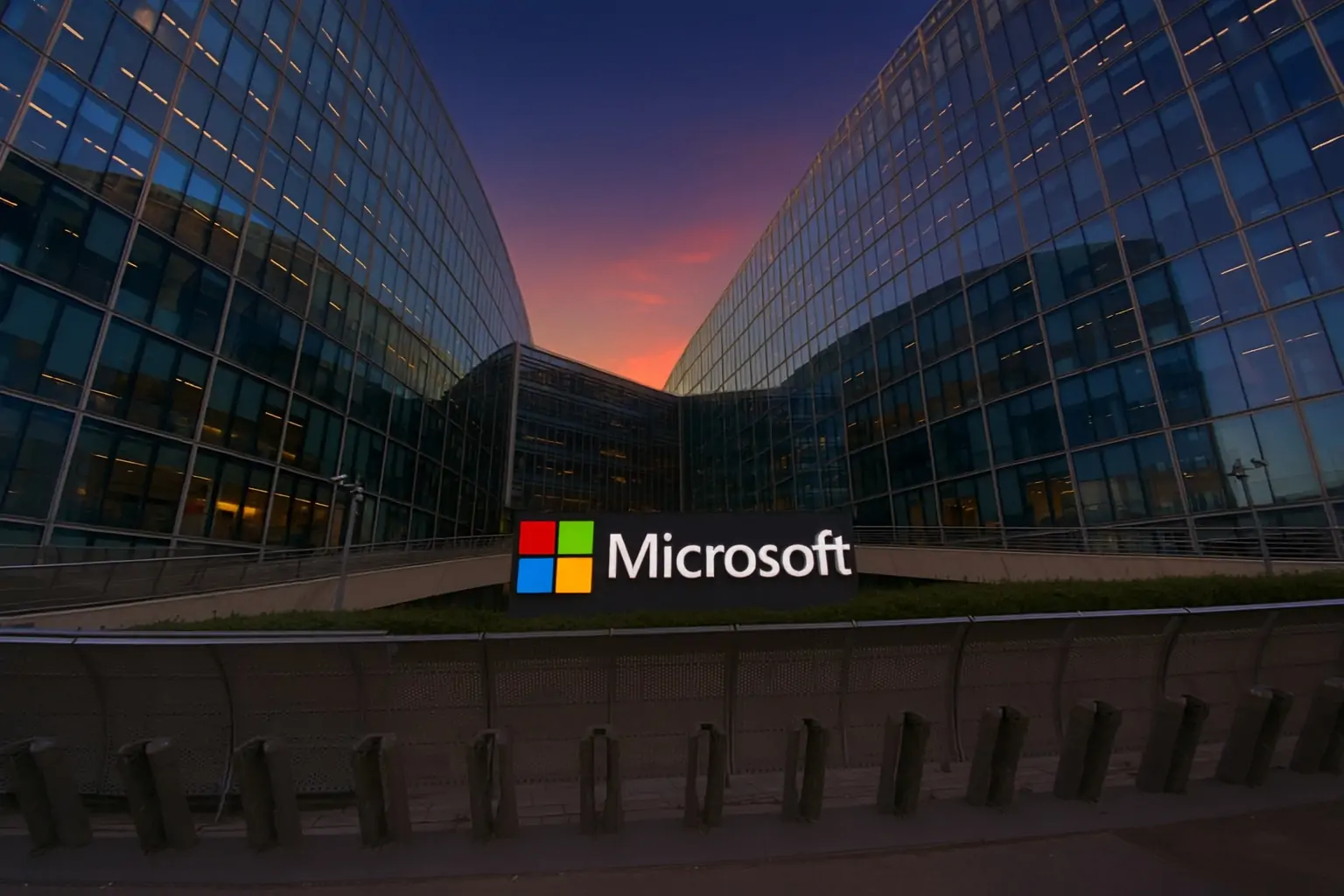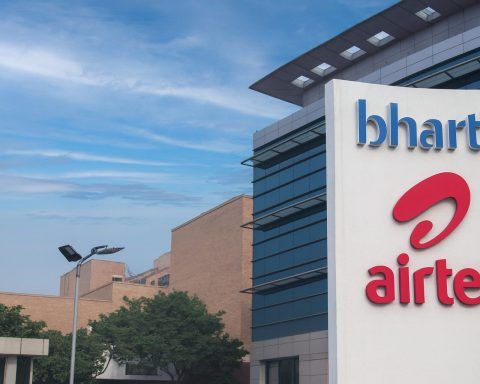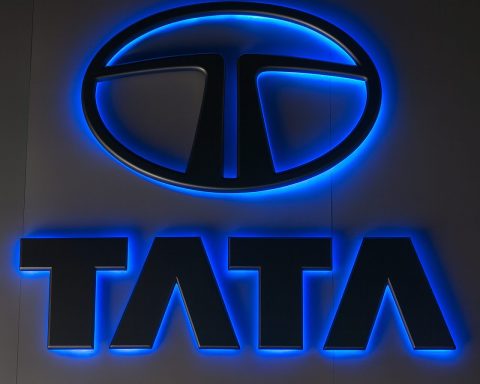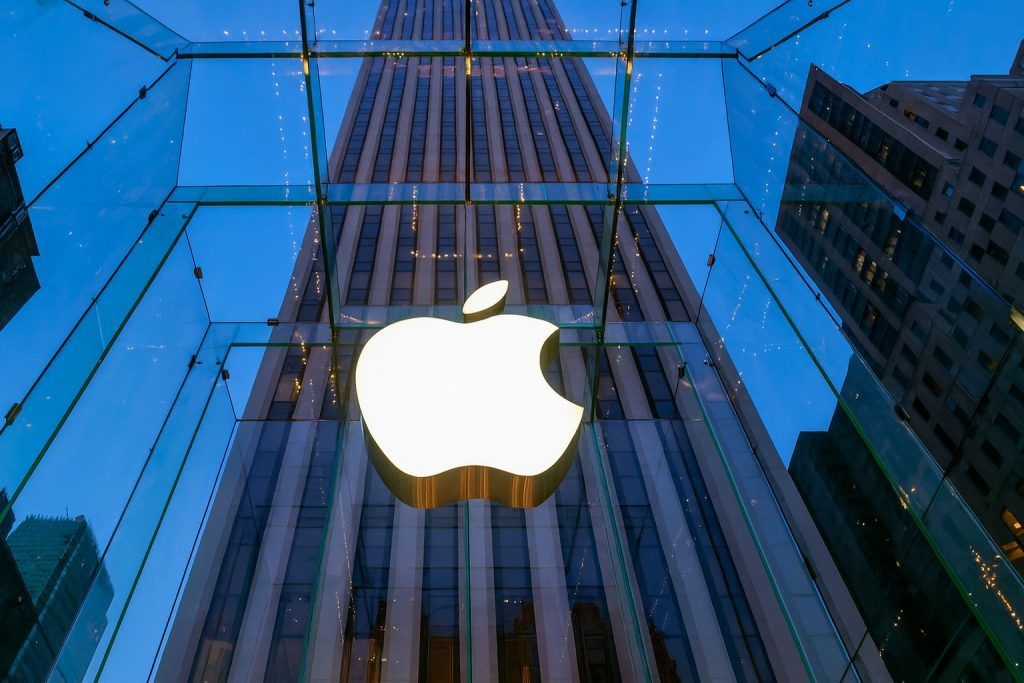On Tuesday, November 18, 2025, Microsoft stock slid as EU regulators opened new cloud investigations, a $30 billion AI infrastructure deal stoked “AI bubble” worries, and a high‑profile analyst downgrade added fresh pressure.
Microsoft stock today: how MSFT traded on 18 November 2025
Microsoft Corporation (NASDAQ: MSFT) ended Tuesday’s session under clear selling pressure.
- Last price: about $493.79 per share, down roughly 2.6–2.7% on the day. [1]
- Intraday range: low near $486.78, high around $504–505. [2]
- Volume: roughly 32–33 million shares, around 48% above its average daily volume near 22 million, signalling active institutional trading. [3]
- Valuation: at these levels, Microsoft’s market capitalization is about $3.85 trillion, trading at roughly 37× trailing earnings.
Technically, the stock is now trading below both its 50‑day and 200‑day moving averages (around $514 and $498 respectively), a sign that short‑term momentum has flipped in favor of sellers. [4]
The move came against a weak broader market backdrop. The S&P 500 logged its fourth straight decline, with AI‑linked tech leaders leading losses as investors braced for Nvidia’s earnings and questioned stretched AI valuations. [5]
EU cloud investigations add fresh regulatory overhang
The biggest new headline weighing on Microsoft and Amazon on November 18 was regulatory, not technological.
The European Commission opened three market investigations into cloud computing services under the bloc’s Digital Markets Act (DMA), with a direct focus on Microsoft Azure and Amazon Web Services: [6]
- Two investigations will assess whether Azure and AWS should be designated “gatekeepers” in cloud computing even though they don’t currently hit the DMA’s usual quantitative thresholds for users and size.
- A third investigation will examine whether existing DMA rules are sufficient to address potential anti‑competitive practices in cloud, such as tying, bundling, interoperability barriers, or unfair contract terms.
If Azure is ultimately designated a gatekeeper in cloud, Microsoft would face tougher obligations—including requirements to ensure interoperability with rivals and restrictions on self‑preferencing—backed by potential fines of up to 10% of global annual revenue for serious breaches. [7]
The move follows a broader EU trend of tightening oversight of cloud infrastructure. On the same day, EU regulators also named Microsoft among “critical” third‑party technology providers for the financial sector under the Digital Operational Resilience Act (DORA), giving supervisors more direct oversight of how cloud outages and cyber‑risks are managed. [8]
For investors, these probes don’t change Microsoft’s near‑term earnings, but they raise the regulatory risk premiumaround one of its most profitable engines: Azure. That added to selling pressure on Tuesday, with some market wrap‑ups explicitly linking Microsoft’s 2.7% slide to the EU’s new cloud scrutiny. [9]
$30 billion Anthropic partnership shows AI ambition — and fuels bubble talk
Paradoxically, some of Tuesday’s most bullish‑sounding AI news also contributed to Microsoft’s stock weakness.
On November 18, Microsoft announced a major AI infrastructure partnership with Anthropic and Nvidia:
- Anthropic (maker of Claude) will commit to buying $30 billion of Azure cloud capacity, with the option to scale up to 1 gigawatt of compute. [10]
- Nvidia will invest up to $10 billion in Anthropic, while Microsoft will invest up to $5 billion, deepening its stake in the frontier‑model ecosystem. [11]
- Anthropic’s Claude models (including Claude Sonnet 4.5, Opus 4.1 and Haiku 4.5) will be available on Microsoft Foundry and Azure, making Claude the only “frontier” AI model available on all three major clouds: AWS, Google Cloud and Azure. [12]
This deal also underscores Microsoft’s evolving AI strategy:
- The company still owns around 27% of OpenAI’s new for‑profit entity under a recently revised agreement that extends key IP and model access through 2032. [13]
- At the same time, it is loosening exclusivity with OpenAI to partner with other AI labs like Anthropic, giving Azure customers more model choice and reducing concentration risk. [14]
From a technology standpoint, this is a clear win: Microsoft strengthens Azure’s AI catalog, Nvidia secures demand for its next‑generation AI chips, and Anthropic gains enormous compute and capital.
Yet markets didn’t cheer. Several commentary pieces noted that Microsoft and Nvidia shares actually fell after the announcement, as investors fretted that these eye‑watering commitments might be another sign of an AI infrastructure bubble: splashy multi‑billion‑dollar deals chasing demand that may not translate into equally large, near‑term profits. [15]
Ignite 2025: Agent 365, Windows 11 Copilot and the rise of AI agents
All of this unfolded on the opening day of Microsoft Ignite 2025 in San Francisco, where AI “agents” and Copilot dominated the keynote.
Agent 365: a control plane for 1.3 billion workplace bots
Microsoft used the conference to introduce Agent 365, a new platform to manage AI agents across the enterprise: [16]
- Agents are AI programs that automate tasks on behalf of employees—from inventory checks to customer support.
- Microsoft projects 1.3 billion such agents will be at work by 2028, and says enterprises are asking for better security, governance and ROI tracking around them.
- Agent 365 gives IT teams tools to discover, approve, quarantine and secure agents, including those running on third‑party platforms like Salesforce—not just Microsoft’s own stack.
The product is part of an early access program for existing license holders and is tightly integrated with Microsoft 365 Copilot and new tooling called Work IQ, which lets organizations build custom agents on their own data. [17]
For investors, Agent 365 reinforces the narrative that Microsoft is not only selling raw compute, but also higher‑level AI orchestration tools that could deepen customer lock‑in and support premium pricing over time.
Windows 11 becomes a “canvas for AI”
On the desktop side, Microsoft detailed how Windows 11 is being reshaped around Copilot and AI agents: [18]
- A new “Ask Copilot” experience on the Windows 11 taskbar brings Microsoft 365 Copilot and agents front and center, with one‑click access, voice commands, and deeper file and app integration.
- Users can invoke, monitor and manage AI agents directly from the taskbar, seeing their status and progress at a glance—similar to how one might monitor background apps today.
- New capabilities include semantic search across local and cloud files, AI‑powered writing assistance, and “Click to Do”, which lets users send whatever is on screen straight into Copilot for analysis or transformation.
Microsoft positions Windows as a “canvas for AI”—an operating system where agents, models and on‑device NPUs cooperate to make daily workflows more intelligent and less app‑centric. [19]
These moves strengthen the long‑term AI growth story for Microsoft, but they also reinforce the capital‑intensive nature of that story: more models, more agents, more data means more data centers, more chips, and more regulatory scrutiny.
Analyst downgrade questions AI economics, but Wall Street stays broadly bullish
While product news skewed positive, Wall Street’s tone turned more cautious on November 18.
Rothschild & Co cuts Microsoft to ‘Neutral’
Rothschild & Co analyst Alex Haissl downgraded Microsoft from “Buy” to “Neutral”, trimming his price target from $560 to $500—a cut of about 10.7%. [20]
In comments reported via Bloomberg and Benzinga, Haissl argued that: [21]
- The generative AI narrative is no longer enough on its own, and investors must treat hyperscaler AI spending more skeptically.
- The economics of Gen‑AI appear weaker than early cloud economics:
- Gen‑AI infrastructure is often depreciated over 5–6 years instead of 3, increasing capital intensity.
- Pricing power may be weaker, especially as more open‑source and multi‑cloud options appear.
- There is a heightened risk of overbuilding AI capacity—a concern echoed in broader commentary about AI’s “destructive economics” for some cloud providers.
Haissl’s downgrade landed on the same day as the EU cloud probes and the Anthropic mega‑deal, reinforcing the idea that Microsoft is spending and committing enormous sums into an area where the ultimate margins are still uncertain. [22]
Consensus still sees upside
Importantly, the downgrade came against a still‑bullish analyst backdrop:
- MarketBeat data shows dozens of Buy ratings versus only a handful of Holds, with an average target price near $632—implying meaningful upside from current levels. [23]
- A Zacks research note published November 18 highlighted that Microsoft shares have outperformed the broader software group year‑to‑date, backed by 40% Azure growth, strong demand for Copilot, and a commercial remaining performance obligation (RPO) around $392 billion, indicating substantial future revenue already in the pipeline. [24]
So while Haissl’s call underscores growing skepticism around AI infrastructure ROI, the broader sell‑side community still views Microsoft as one of the most attractive ways to gain large‑cap AI exposure.
Under the hood: earnings, AI capex and fundamental trends
The November 18 moves didn’t occur in a vacuum. They follow an earnings report that was fundamentally strong, but controversial on spending.
For its fiscal Q1 2026 (quarter ended September 30, 2025), Microsoft reported: [25]
- Revenue of about $77.7 billion, up roughly 18% year over year, beating analyst expectations.
- GAAP EPS around $3.72 and non‑GAAP EPS near $4.13, both ahead of consensus.
- Azure and other cloud services growth near 39–40%, again topping forecasts.
- Microsoft Cloud revenue above $49 billion, up about 26% year over year.
- A commercial RPO of roughly $392 billion, up more than 50%—a strong indicator of multi‑year demand locked into contracts.
Yet despite those numbers, the stock fell 3–4% after hours on the earnings release as investors focused on: [26]
- Massive AI infrastructure spending—estimated around $80 billion in FY2025—that has yet to fully translate into profit growth.
- Management guidance for flat operating margins as data center build‑out continues.
- Signs of capacity bottlenecks limiting how quickly AI demand can be monetized, even as customers line up for Azure capacity.
Tuesday’s sell‑off can be read as an extension of this theme: strong fundamentals, but increasing debate over whether AI capex is being invested at an optimal pace and price.
Technical picture: Microsoft tests a 25‑year trendline
Technical analysts also pointed to an extraordinary chart milestone for Microsoft on November 18.
According to a detailed recap from Verified Investing, Microsoft’s intraday move pulled the stock back to a trendline drawn all the way from its pre‑dot‑com‑bubble highs in 1999, connected through a key 2024 pivot. [27]
Key technical observations from that analysis:
- After a multi‑year breakout above this long‑term trendline, MSFT has now retested the line from above—a classic “back‑test” that often acts as support in strong uptrends.
- Intraday, the stock briefly dipped below the line before buyers stepped in, suggesting many traders are watching this level closely.
- The daily chart structure resembles a bear‑flag style consolidation, with one technician flagging $491 as a key breakdown level, near‑term support around $475, and a deeper downside target closer to $450 if selling accelerates.
These are technical viewpoints rather than guarantees, but they help explain why short‑term traders reacted so sharply to Tuesday’s price action. A long‑term trendline that has held for decades tends to attract both dip‑buyers and short‑sellers.
What 18 November means for Microsoft stock going forward
Put together, November 18, 2025 was a day where:
- Regulation tightened: The EU’s DMA cloud investigations and DORA designations cast a longer shadow over hyperscale cloud dominance, including Azure. [28]
- AI ambitions escalated: The $30 billion Anthropic deal, combined with Nvidia’s investment and Ignite announcements around Agent 365 and Windows 11 AI agents, reaffirmed Microsoft’s determination to be a central platform for generative AI and autonomous agents. [29]
- Valuation debate intensified: A prominent downgrade and growing coverage of AI’s “destructive economics”underscored concerns that AI infrastructure spending might be outpacing visible returns, especially at current valuation multiples. [30]
- The chart flashed a test: Technicians watched MSFT retest a 25‑year trendline, turning Tuesday into a potential inflection point for short‑ to medium‑term momentum. [31]
For long‑term investors, the day highlighted the core trade‑off in Microsoft stock right now:
- On one side: explosive cloud and AI demand, dominant enterprise relationships, multi‑year RPO, and a flood of new AI products across Azure, Microsoft 365, Windows and Edge. [32]
- On the other: regulatory, capital‑intensity and valuation risks that could pressure margins if AI revenues don’t scale fast enough or if regulators constrain how hyperscalers monetize their dominance. [33]
In the short term, traders will be watching:
- Nvidia’s earnings and AI commentary, which often set the tone for the whole AI trade. [34]
- Any early signals from the EU investigations into Azure and AWS. [35]
- How quickly Microsoft can turn Anthropic’s commitments and Ignite’s AI features into tangible revenue and margin contributions.
Important note
This article is for informational and journalistic purposes only and is not investment advice. It does not take into account your individual objectives or financial situation. Always do your own research and consider speaking with a qualified financial advisor before making investment decisions.
References
1. www.marketbeat.com, 2. www.marketbeat.com, 3. www.marketbeat.com, 4. www.marketbeat.com, 5. www.investopedia.com, 6. digital-markets-act.ec.europa.eu, 7. www.reuters.com, 8. www.reuters.com, 9. www.investopedia.com, 10. apnews.com, 11. apnews.com, 12. www.theverge.com, 13. www.reuters.com, 14. www.reuters.com, 15. www.investopedia.com, 16. www.reuters.com, 17. www.reuters.com, 18. techcommunity.microsoft.com, 19. techcommunity.microsoft.com, 20. www.gurufocus.com, 21. www.benzinga.com, 22. www.investopedia.com, 23. www.marketbeat.com, 24. www.nasdaq.com, 25. www.reuters.com, 26. www.xtb.com, 27. verifiedinvesting.com, 28. digital-markets-act.ec.europa.eu, 29. apnews.com, 30. www.benzinga.com, 31. verifiedinvesting.com, 32. www.xtb.com, 33. digital-markets-act.ec.europa.eu, 34. www.investopedia.com, 35. digital-markets-act.ec.europa.eu







